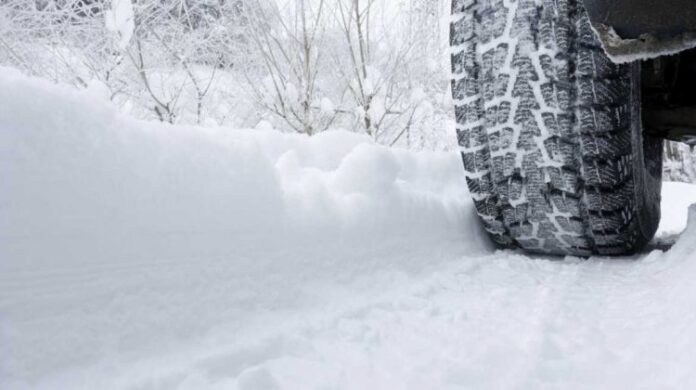Despite being just a few days into fall, Road Safety at Work is urging motorists to ensure their vehicles are ready before the snow hits.
BC’s winter tire law comes into effect on October 1. For most roadways in the Southern Interior Region, winter or mud and snow tires are required until April 30.
For highways not located through mountain passes or high snowfall areas, tire and chain requirements are only in effect until March 31.
“Winter tires aren’t just for snow and ice; they also provide better traction in rain and the cooler temperatures we’re already seeing at night,” said Trace Acres, program director of Road Safety at Work.
“They’re one of the best safety features on any vehicle at this time of year. Putting them on now, before poor weather really hits, can help keep drivers and their passengers safe.”
Legal winter tires must have at least 3.5 mm of tread.
Tires displaying the three-peaked mountain or snowflake symbol provide better traction and stopping distances when temperatures drop below 7°C. Tires with the M+S (mud and snow) symbol also meet the legal requirement.
How to adjust your driving in fall
October 1 also marks the launch of Road Safety at Work’s Shift into Winter Campaign. Acres says it aims to get people thinking about winter driving preparation.
“When it’s still fairly warm, winter is the last thing on our minds, but waiting until there is 10 centimetres of snow on the ground is too late. Now is the time to think about your tires. It’s time for employers to consider whether their employees may need some training. It’s never too early to start thinking about these things, and it’s difficult to get people to turn their attention to winter when the weather is still so good, but now is the time to do it.”
Drivers can help keep themselves and their passengers safe by following these tips from the Shift into Winter campaign:
- Give your vehicle a seasonal check-up. Add antifreeze and check tire pressure. Inspect brakes, lights, and engine belts. Install winter wiper blades and winter-rated washer fluid.
- Avoid driving when conditions are poor. Before you go, check DriveBC to see what you can expect on your route.
- Slow down. Posted speed limits are set for ideal conditions; fall and winter conditions are not ideal.
- Leave at least four seconds of distance between your vehicle and the one in front of you. Following too closely can lead to rear-end crashes on slick roads where stopping can be a problem.
- Put away phones and focus on driving. Drivers are 3.6 times more likely to crash when using a phone while behind the wheel, according to ICBC.
- Keep vehicle lights on at all times. Drivers need to see and be seen.
- Pay attention to instructions in roadside work zones. Flag persons and traffic control devices help you travel safely through uneven surfaces and narrow lanes.
Riskiest time of year for work driving
According to Road Safety at Work, November through January is the most dangerous time of year for the hundreds of thousands of British Columbians who drive as part of their job.
Work-related crashes resulting in injury and time-loss claims during those months increase by 26 per cent compared with the rest of the year, according to WorkSafeBC statistics.
Work driving can be done occasionally, part-time, or full-time. It includes everything from making deliveries to visiting clients to picking up office supplies.
Employers are responsible for the safety of employees whenever they drive for any work-related reason, and employees are encouraged to ask their supervisor for winter driving training if they drive on the job.
Be the first to know! Don’t miss out on breaking news and daily updates in your area. Sign up to MyEastKootenayNow News Alerts.




